Meteorites that collide with Earth exhibit certain characteristics that may be readily identifiable or not depending on the type of meteorite and how long it has been exposed to Earth’s oxygen and water. Sometimes correct identification requires chemical analysis and careful evaluation by an expert. Here are a few characteristics that suggest a rock might be a meteorite.
A rock might be a meteorite if it has these qualities:
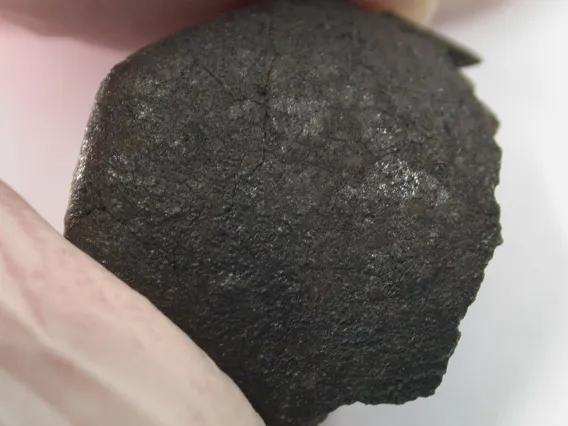
Fusion Crust
Fusion Crust thin black coating
Don’t be fooled by black desert varnish common on rocks in desert regions, “skin” on volcanic rocks or artificial slag, or chemical reaction rinds.
Fusion crust is a thin black coating formed as a meteorite passes through Earth’s atmosphere. Temperatures as high as 1000° C (1832° F) cause the outer part of the meteorite to melt. Upon exposure to Earth’s oxygen and water, fusion crust weathers to a rusty-brown color.

Interior
Interior looks different from the exterior fusion crust; in a cut area look for small, round objects the size of a poppy seed.
Iron-nickel meteorites and some rare stony meteorites don’t have these round objects.
The interior usually looks different from the outer “fusion crust”. It won’t necessarily look melted. Stony meteorites can range from a light gray color to black. Look for chondrules: tiny, 1mm diameter, spheres. These may or may not be easily discernable depending on the meteorite type.
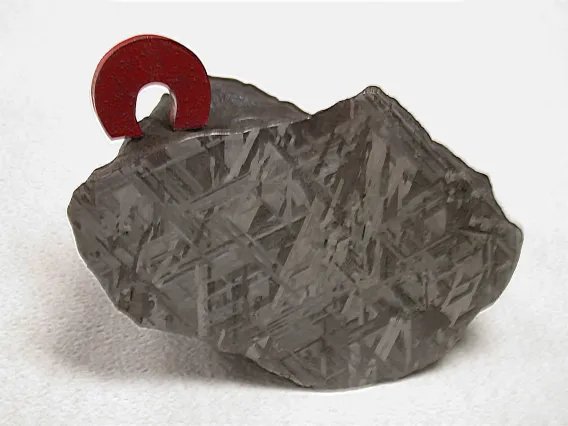
Magnetism
Uniform attraction to a magnet is strong in iron-nickel meteorites; weaker in stony meteorites. Beware: black, lumpy, magnetite-bearing Earth rocks will attract a magnet, too.
Most meteorites attract a magnet at least slightly in a uniform pull around the specimen. Iron-nickel meteorites strongly attract a magnet. Some meteorites are not noticeably magnetic. If the rock does not attract a magnet, look for a fusion crust.
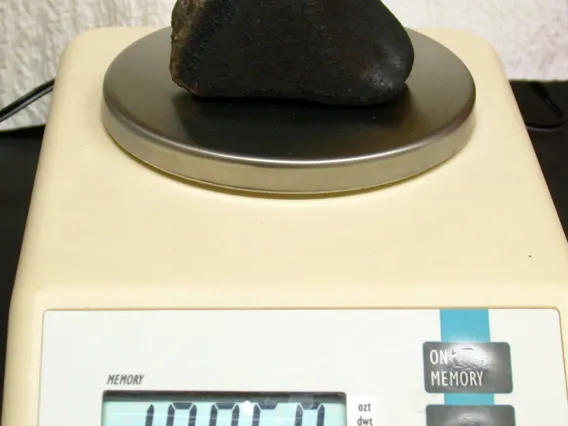
Density
Density is usually higher than Earth rocks; not always.
Beware: Some rocks and slags are very dense. So density is not a reliable meteorite indicator by itself.
If the sample is dense (heavy for its size), is it metallic? The densest meteorites are the iron-nickel and stony-iron types (7-8 g/cm3). Stony meteorites may or may not seem heavier than common terrestrial rocks. They range in density from 2 g/cm3 to 3.5 g/cm3.
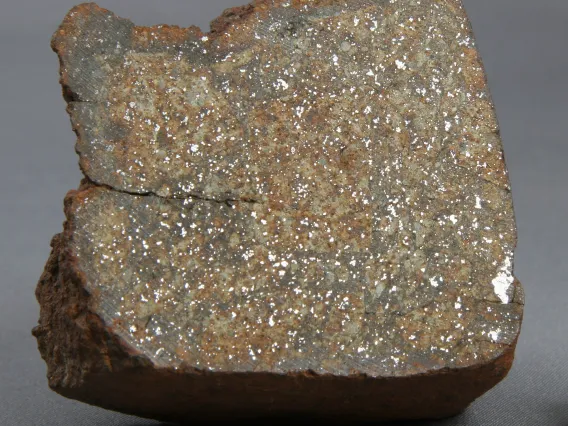
Metal (all or flecks)
Metal flecks are found in most stony meteorites.
Sometimes glints of light reflected from mica or other crystal faces are confused with “flecks of metal”. Use a magnifier or microscope to distinguish.
Small irregular flecks of iron-nickel metal and iron-sulfide less than 1 mm across are important features of the most common stony meteorites known as chondrites. Iron-nickel meteorites will exhibit a diagnostic criss-cross “Widmanstätten” pattern when a cut surface is etched with a special acid mixture. Don’t do this at home! See an example of the pattern in the Magnetism panel above.
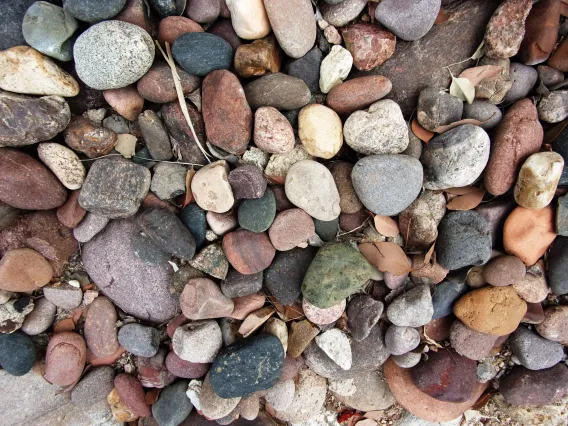
Number of rocks
Number of rocks; good sign if yours is the only one like this in the area.
Caution: Rocks can erode out of geological strata and be transported by glaciers, rivers, and intermittent washes.
Is your rock the only one of this appearance and type found in the area? There are few places in the world where more than one meteorite is found in a relatively small area. Therefore this is a practical guideline; not a strict criterion.
A rock is not a meteorite if it has these qualities:
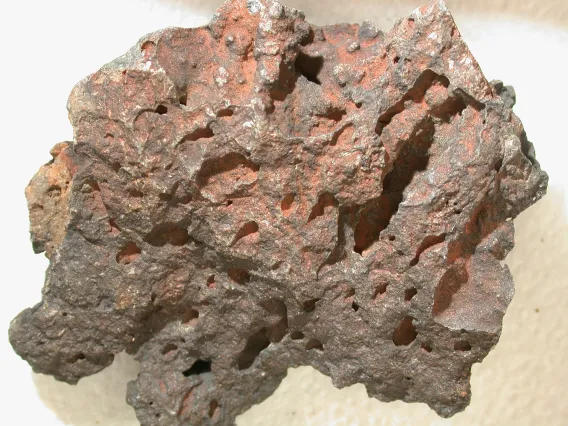
Large Vesicles
Large vesicles are not found in meteorites.
Vesicles are common in volcanic rocks and artificial slag.
Meteorites generally do not exhibit gas bubbles or vesicles except at the microscopic level in the fusion crust. One meteoriticist estimates less than 1 in 1000 meteorites might contain vesicles.
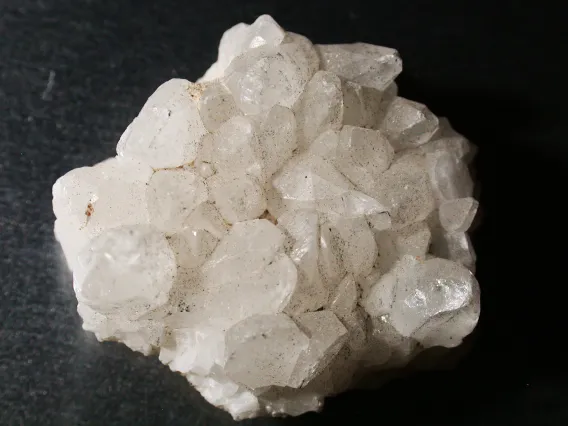
Large crystals
Large crystals such as quartz or amethyst do not exist in meteorites.
Extra hint: Geode-like rocks or concretions are not meteorites.
Meteorites do not exhibit large crystals because conditions favorable to their formation are not present on asteroids (the “parent bodies” of meteorites). Stony-iron meteorites known as pallasites are a special case. They contain green or yellow olivine that was trapped in iron-nickel metal deep within a large asteroid.
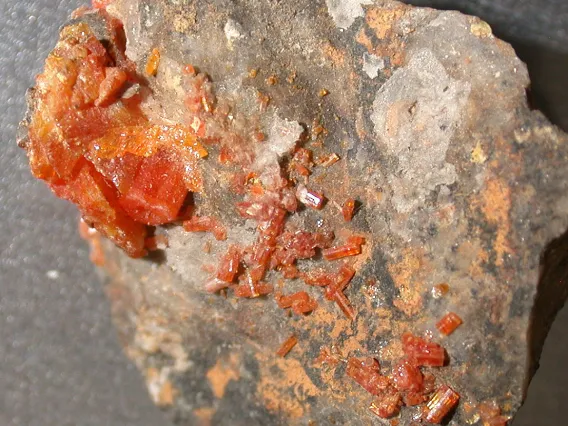
Bright colors
Bright-colored minerals in rocks or colorful rocks are not meteorites.
If your rock is red, purple, green, or blue it is not a meteorite.
Except for pallasites (stony-iron meteorites), meteorites do not exhibit large crystals, patches, or components with bright colors.
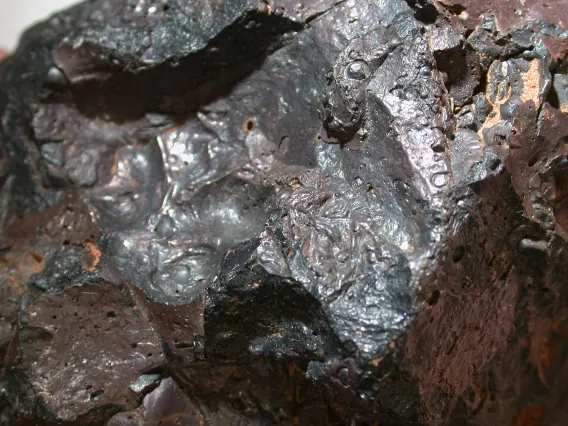
Iridescent surface
Iridescent surface is not found on meteorites.
Iridescent sheen is commonly seen on surfaces of volcanic rocks from fresh eruptions. It may be seen on artificial slag, too.
The exteriors of most meteorites do not show any iridescent sheen. Their fusion crust is either matte black or glossy black when fresh or rusty brown after being exposed to Earth’s oxygen and water.
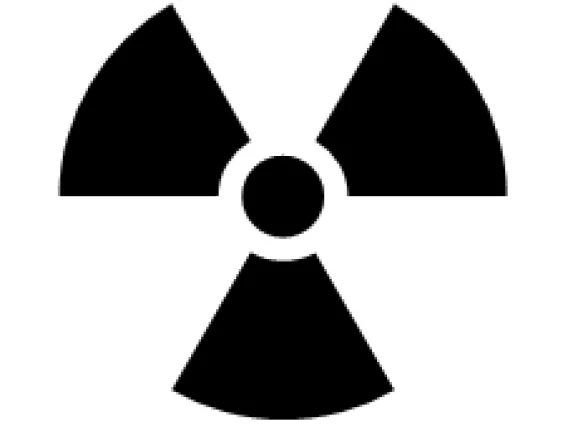
Radioactivity
Radioactivity that can be measured with a Geiger counter is not found in meteorites.
Don’t believe old science fiction movies about dangerous radioactive meteorites.
Meteorites do not emit dangerous radiation. Strictly speaking, if scientists are able to measure a freshly fallen meteorite for a very long time with special gamma-ray detectors, we may be able to detect the effects of its exposure to solar cosmic rays while it was in space.
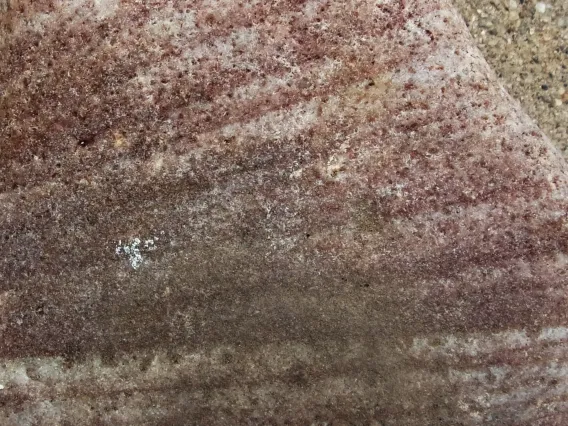
Sedimentary layers
Sedimentary layers are not seen in meteorites.
Sedimentary rocks require oceans, lakes or rivers that are not found on asteroids.
We do not expect to find meteorites with sedimentary layers emplaced by oceans, rivers, or lakes.

